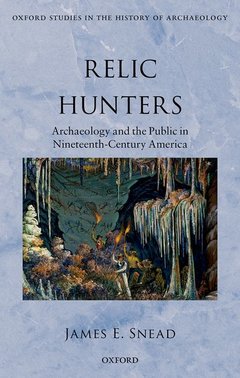Description
Relic Hunters
Archaeology and the Public in Nineteenth- Century America
Oxford Studies in the History of Archaeology Series
Author: Snead James E.
Language: English
Publication date: 09-2018
320 p. · 14.8x22.5 cm · Hardback
320 p. · 14.8x22.5 cm · Hardback
Description
/li>Biography
/li>
Relic Hunters is a study of the complex relationship between the people of 19th century America with the material antiquities of North America's indigenous past. As scholars struggled to explain their existence, farmers in Ohio were plowing up arrowheads, building their houses atop burial mounds, and developing their own ideas about antiquity. They experienced the new country as a "place with history" reflected in material traces that became important touch points for scientific knowledge, but for American cultural identity as well. Relic Hunters traces the encounter with American antiquities from 1812 to 1879. This encompasses the period when archaeology took root in the United States: it also spans the "deep settlement" of the Midwest and sectional strife both before and after the Civil War. At the center of the story is the first iconic find of American archaeology, known as "the Kentucky Mummy." Discovered deep in a cavern, this dessicated burial became the subject of scholarly competition, traveling exhibitions, and even poetry. The book uses the theme of the Kentucky Mummy to structure the broader story of the public and American antiquities, a tour that leads through rural museums, mound excavations, lecture tours, shady deals, and ultimately into the famous attic of the Smithsonian Institution. Ultimately, Relic Hunters is a story of the American landscape, and of the role of archaeology in shaping that place. Derived from letters, memoranda, and reports found in more than a dozen archives, this is a unique account of a critical encounter that shaped local and national identity in ways that are only now being explored.
James E. Snead is Professor at California State University, Northridge. He completed his Ph.D. at UCLA in 1995: subsequent writing and research has been supported by numerous institutions and agencies, including the American Museum of Natural History, the Wenner-Gren Foundation, the American Antiquarian Society, and the National Science Foundation.
© 2024 LAVOISIER S.A.S.




